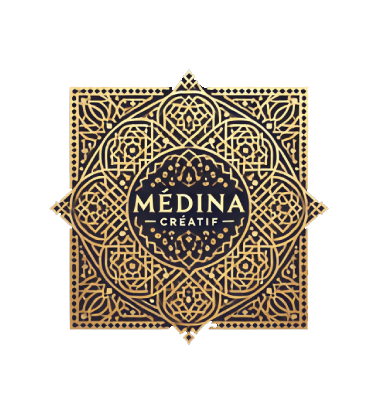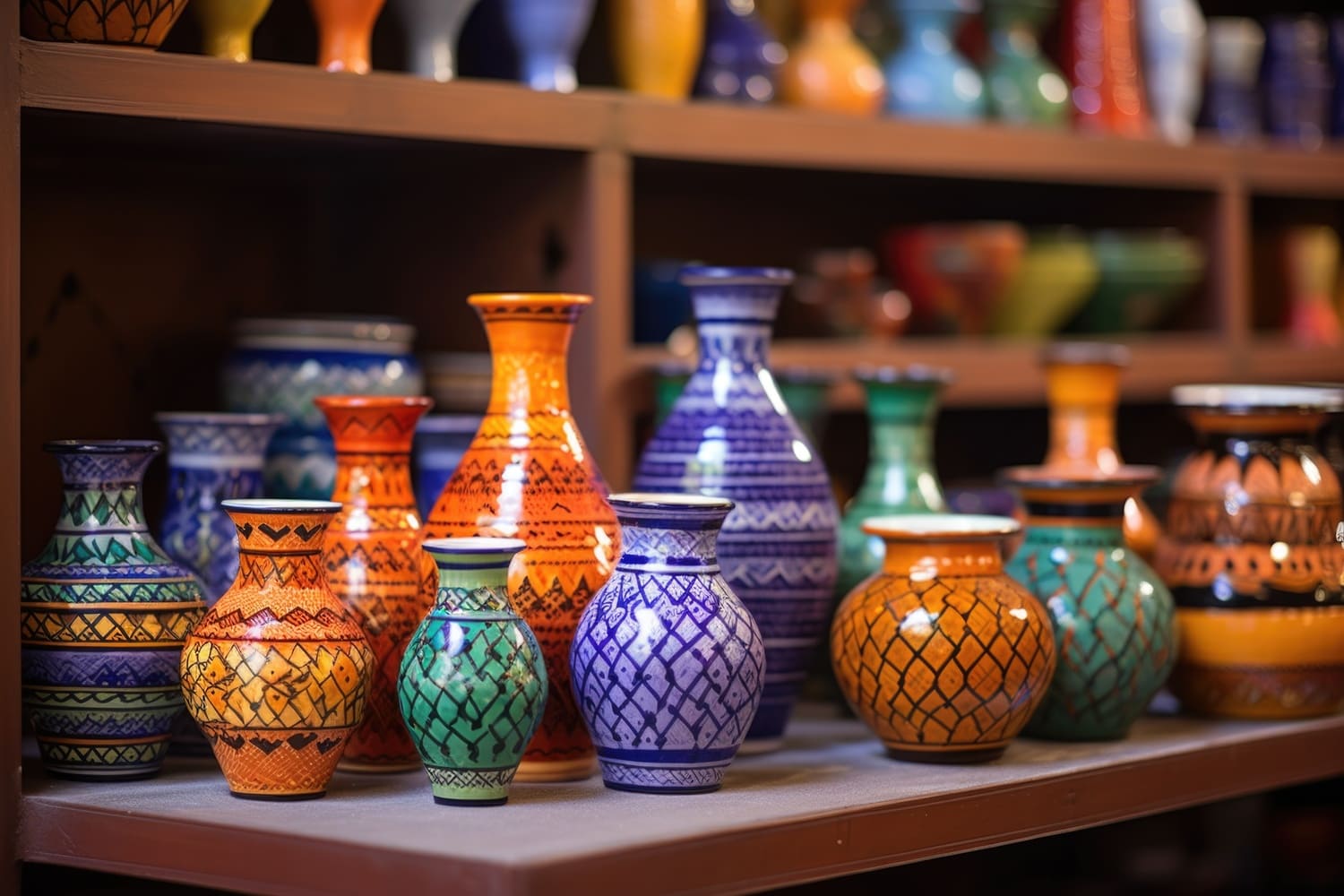Moroccan pottery is a reflection of the country’s rich history, artistry, and cultural diversity. For centuries, skilled artisans have crafted stunning ceramics using traditional techniques, resulting in pieces that are both functional and decorative. From hand-painted plates to earthy Tamegroute pottery, Moroccan ceramics tell a story of heritage, craftsmanship, and passion.
In this article, we’ll explore the history, different styles, and the meticulous process behind Moroccan pottery, as well as tips on identifying authentic pieces.

The History of Moroccan Pottery
Moroccan pottery dates back thousands of years, influenced by Berber, Arab, and Andalusian cultures. Over time, artisans developed unique styles and techniques, passing them down through generations. The intricate patterns and vibrant colors seen in Moroccan ceramics are a blend of these influences, making each region’s pottery distinct.
Influences on Moroccan Pottery
- Berber Influence: Earthy tones, geometric patterns, and raw textures.
- Andalusian Influence: Floral motifs and sophisticated glazing techniques.
- Islamic Influence: Calligraphy and symmetrical designs, inspired by Islamic art.
Popular Moroccan Pottery Styles
Different regions in Morocco specialize in unique ceramic styles. Here are some of the most famous ones:
1) Fez Pottery: The Elegance of Blue and White
Fez is renowned for its hand-painted blue and white ceramics, often featuring floral and geometric patterns. Artisans use cobalt blue on a white background to create intricate designs that reflect the city’s Andalusian heritage.
2) Safi Pottery: The Vibrant and Colorful Art
Safi is considered the pottery capital of Morocco, known for its brightly colored ceramics in green, red, and yellow. These pieces often feature floral motifs and are popular as both tableware and decorative items.
3) Tamegroute Pottery: The Rustic Green Charm
Originating from the Draa Valley, Tamegroute pottery is famous for its deep green glaze, made using a secret traditional method. These pieces have an earthy, rustic look, making them highly sought after by collectors.
4) Traditional Tagine Pots
A tagine is a staple in Moroccan kitchens. These clay cooking pots are used to slow-cook stews, allowing the flavors to develop deeply. The unglazed clay tagines add a unique, earthy taste to the food.
How Moroccan Pottery Is Made
The creation of Moroccan pottery is a labor-intensive process that requires precision and skill.
1) Clay Preparation
Artisans use natural clay, which is kneaded and shaped by hand or using a potter’s wheel. The type of clay varies by region, affecting the final texture and color.
2) Hand-Painting and Engraving
After the clay dries, artisans paint intricate patterns using natural pigments. Some pieces are engraved with traditional Berber symbols or Arabic calligraphy.
3) Glazing and Firing
Once painted, the pottery is coated with a glaze that gives it a glossy or matte finish. It is then fired in a kiln at high temperatures, solidifying its durability and enhancing the colors.
How to Identify Authentic Moroccan Pottery
When buying Moroccan pottery, keep these tips in mind to ensure authenticity:
- Look for Handmade Imperfections – Authentic pieces have slight variations in patterns, unlike factory-made ones.
- Check the Texture – Moroccan pottery is usually heavier and has a rich, organic feel.
- Inspect the Bottom – Handmade ceramics often have an unglazed base with artisan markings.
- Buy from Trusted Sources – Ensure you’re purchasing from ethical brands or artisan cooperatives.
FAQs About Moroccan Pottery
1. Is Moroccan pottery handmade?
Yes! All authentic Moroccan pottery is handmade by artisans using traditional techniques passed down through generations.
2. Can I use Moroccan pottery for serving food?
Absolutely! Many Moroccan ceramics, especially tagines, plates, and bowls, are food-safe and perfect for daily use.
3. How do I take care of Moroccan pottery?
Hand-wash your pottery with mild soap and avoid dishwashers and microwaves to maintain its color and durability.
4. What makes Tamegroute pottery special?
Tamegroute pottery is known for its deep green glaze, which results from a special firing process unique to the region.
5. Where can I buy authentic Moroccan pottery?
You can purchase handcrafted Moroccan ceramics from ethical brands, artisan markets, or specialized online stores like Medina Creatif.
Conclusion
Moroccan pottery is not just about aesthetics; it’s a reflection of culture, tradition, and timeless artistry. Whether you’re looking for a decorative piece, a functional tagine, or a handmade plate, each item carries the history of Morocco’s rich craftsmanship.

